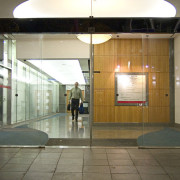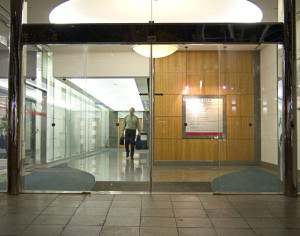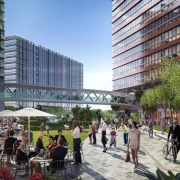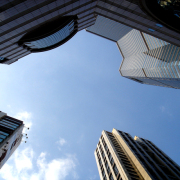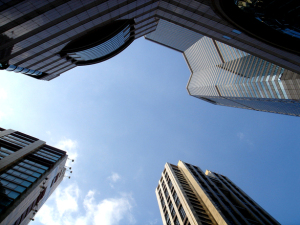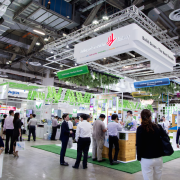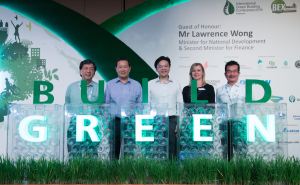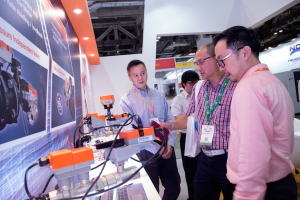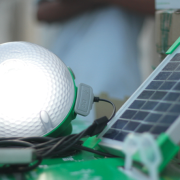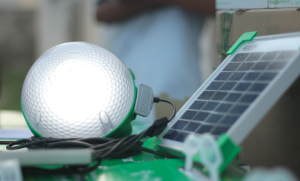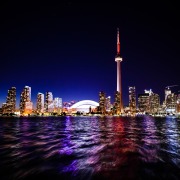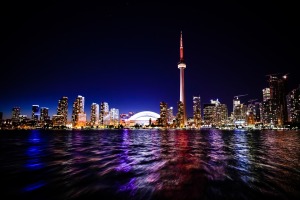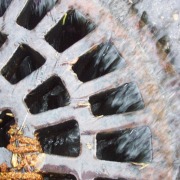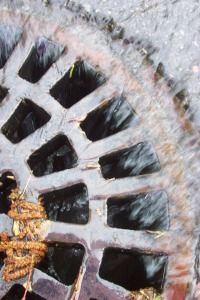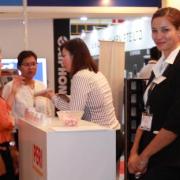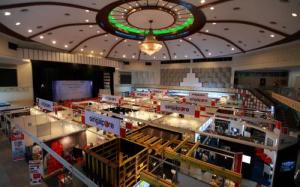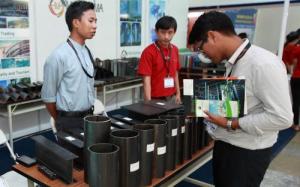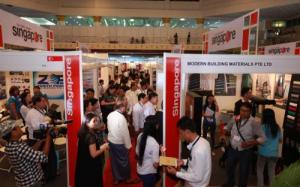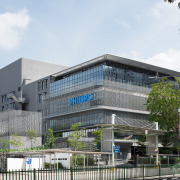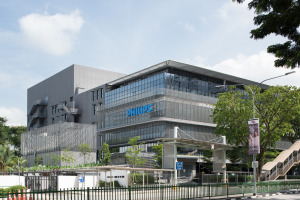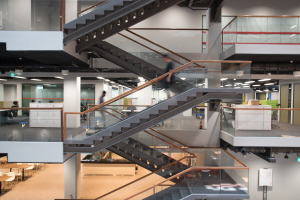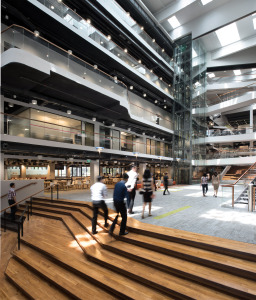Reading Time: 4 minutes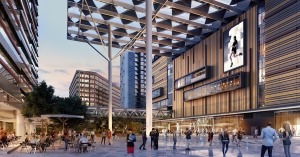
Artist’s impression of Paya Lebar Quarter. Image courtesy of www.payalebarquarter.com
Lendlease, an international property solutions provider with over 40 years’ experience in Singapore, recently unveiled Paya Lebar Quarter, an urban regeneration mixed- use development bringing together progressive workplaces, dining, shopping and generous green public spaces. The project is set to catalyse the area’s regeneration into a bustling, pedestrian- friendly new city precinct while retaining its cultural richness.
Expected to be completed in phases with retail and commercial in H2 2018 and residential in H1, 2019, Paya Lebar Quarter will be a significant landmark of Urban Redevelopment Authority’s (URA) 12-hectare Paya Lebar Central, the most centrally located regional commercial hub in Singapore.
Located just 10 minutes from the CBD by car or train, the 3.9 hectare Paya Lebar Quarter development enjoys excellent connectivity with direct connections to the Paya Lebar MRT interchange. Aligned with Singapore’s vision to be a car-lite city, Paya Lebar Quarter is one of the first developments to incorporate a cycling path within the precinct that facilitates a continuous connection to the wider Park Connector Network. Office occupants will also have access to end-of- trip-facilities, making active commuting to work, such as cycling, a reality.
“Urban regeneration is a key pillar of Lendlease’s strategy and it comprises over 70 percent of Lendlease’s S$49.3 billion international development pipeline. With its central location, Paya Lebar Quarter will lead the way in regenerating the area and will turn it into a vibrant hub offering a new and dynamic city life,” said Mr Richard Paine, Managing Director of Paya Lebar Quarter.
The Paya Lebar Quarter architecture responds to the area’s heritage with inspiration drawn from the intricate weaving patterns of the Songket, a traditional brocade textile of the Malay culture; the design language and gold-and-silver colour palette for the façade seek to unify the buildings and public areas to seamlessly weave the seven buildings into a single tapestry.
From the start of the planning for Paya Lebar Quarter, Lendlease has been closely engaged with community stakeholders, ensuring that its design enables social inclusivity and builds community heartware, an increasingly important consideration as cities urbanise.
One of the signature features of Paya Lebar Quarter is the generous provision of 100,000 square feet of green public spaces (the size of more than 20 basketball courts). These public spaces will be where the community can bond and build a network of relationships through spontaneous interactions, collective celebrations and new friendships among those who live, work and play at Paya Lebar Quarter. There will be a covered outdoor event space, which will also help enhance a strong community spirit and culture by hosting large scale celebratory, festive and community events.
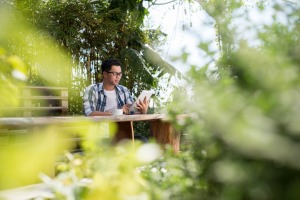
One of the signature features of Paya Lebar Quarter is the generous provision of 100,000 square feet of green public spaces. Image courtesy of www.payalebarquarter.com
“We are glad that the distinctive cultural heritage and community spirit of this area is reflected in Paya Lebar Quarter,” said Prof Fatimah Lateef, Member of Parliament (MP) for Marine Parade Group Representation Constituency (GRC) for the ward of Geylang Serai. She added, “The development complements and adds to the revitalisation of the precinct as well as the dynamism of the area. It will complement the adjacent development of Wisma Geylang Serai, due for completion in 2018. This area will be a new place for the community to hangout and to own. It is befitting as a location in the Geylang-Paya Lebar sub-regional centre.”
Progressive and Creative Place-making
Paya Lebar Quarter will serve a working population of 22,000 in the local catchment area within 7 minutes’ walk and approximately one million residents in the trade area. When the wider Paya Lebar Central precinct is fully developed, Paya Lebar Quarter is expected to have 52,000* workers in its immediate catchment.
Mall:
The Paya Lebar Quarter mall will be the social heart of a vibrant Paya Lebar retail precinct, with over 200 retail shops offering a multitude of exciting indoor and parkside dining, lifestyle and fashion options for residents, office executives and shoppers. NTUC FairPrice Finest and Kopitiam are the first two anchor tenants to sign up at Paya Lebar Quarter mall, taking over 22,000 sq ft and 15,000 sq ft of space respectively.
Workplace:
Three Grade A office towers with close to one million square feet of high quality work space will be within the development. These offices are designed for businesses that embrace a progressive work culture that promotes collaboration, health and wellbeing, flexibility and productivity.
Residences:
Park Place Residences at Paya Lebar Quarter comprises three towers with 429 units that offer residents a private sanctuary in a vibrant and centrally located city precinct. Residents can enjoy a connected city lifestyle with easy access to a myriad of amenities, activities and green public spaces.
Building a Green, Active, Engaged Precinct
Paya Lebar Quarter’s sustainability vision focuses on building an Active, Green and Engaged environment for people who live, work and play there. The development is on track towards being the first development to achieve the BCA Green Mark 2015 Platinum rating. In addition, the project has also incorporated evidence-based design strategies across the precinct to enhance occupant health and wellbeing.
“Lendlease has always had a reputation as a sustainability leader. In FY15, we have received 69 awards recognizing our global environmental and social leadership,” said Mr Paine.
For more information, visuals and a preview of how Paya Lebar Quarter will lead the transformation of Paya Lebar into a dynamic business and lifestyle hub, please visit www.payalebarquarter.com.



